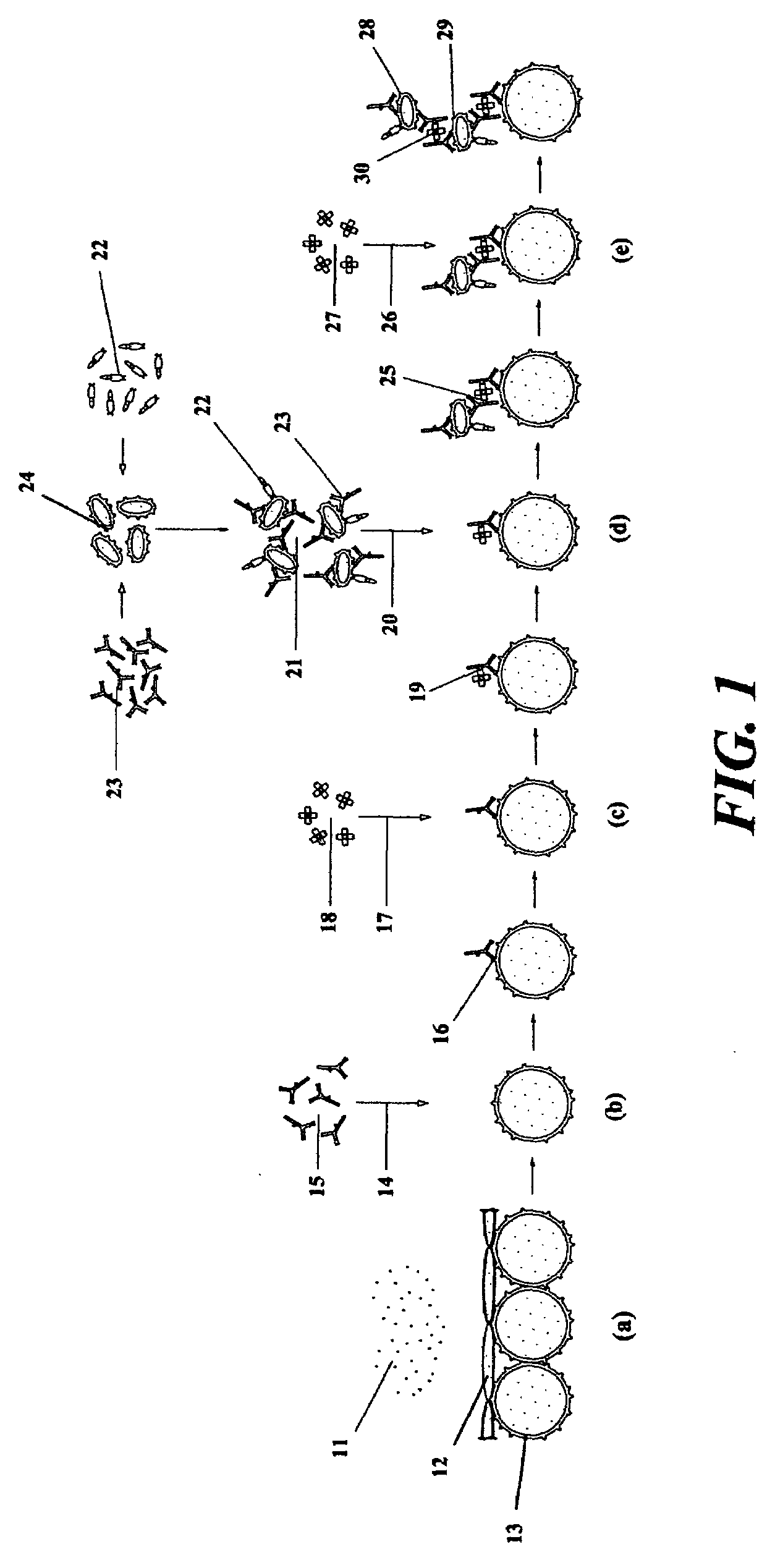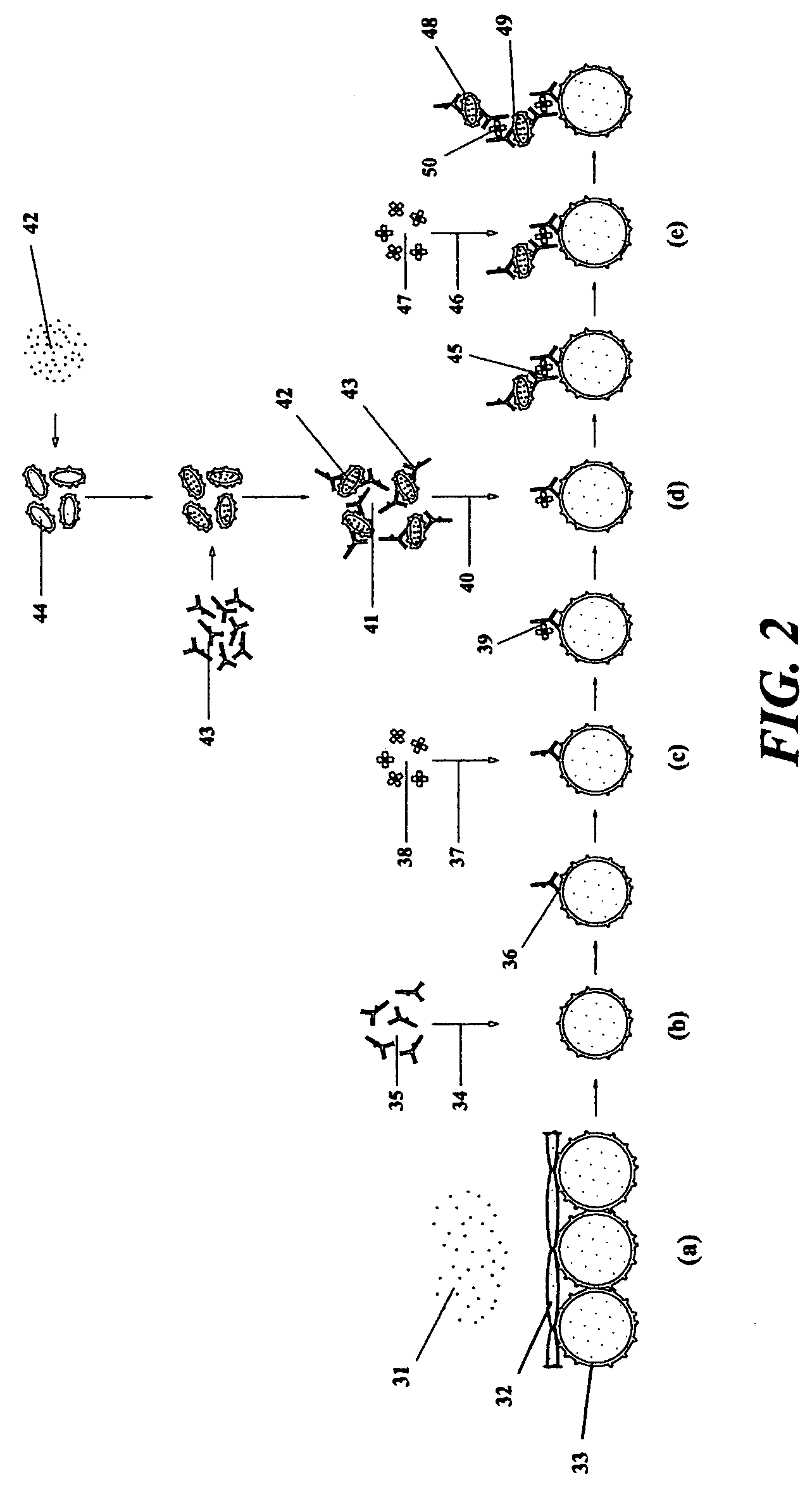Method and means for treating solid tumors
a solid tumor and treatment method technology, applied in the field of solid tumor treatment methods, can solve the problems of ineffective combination treatment with all three modalities, ineffective treatment against all cancer and tumor cells, and subsequent treatment being less effective at killing cancer cells
- Summary
- Abstract
- Description
- Claims
- Application Information
AI Technical Summary
Benefits of technology
Problems solved by technology
Method used
Image
Examples
Embodiment Construction
[0054]Prior art made of record includes the inventor's earlier U.S. patent application Ser. Nos. 11 / 343,694 and 11 / 399,281, which provides a method for treating a vascularized solid tumor by targeting a plurality of, in vitro prepared, anticellular agent-carrying blood platelets to the vasculature of the tumor, to induce a thrombus formation within the tumor vasculature, and at the same time to deliver a high concentration of the anticellular agent to the tumor cells.
[0055]However, as these before mentioned patent applications don't provide a definite mechanism with which anti-tumor antibodies may access the tumor cells, and also don't provide a definite mechanism with which the anticellular agent carried by the blood platelets may be provided to the peripherally located tumor cells, so, there exists a need for a method of treating solid tumors having a definite mechanism with which anti-tumor antibodies may access the tumor cells, and having a definite mechanism with which the anti...
PUM
| Property | Measurement | Unit |
|---|---|---|
| Concentration | aaaaa | aaaaa |
| Therapeutic | aaaaa | aaaaa |
Abstract
Description
Claims
Application Information
 Login to View More
Login to View More - R&D
- Intellectual Property
- Life Sciences
- Materials
- Tech Scout
- Unparalleled Data Quality
- Higher Quality Content
- 60% Fewer Hallucinations
Browse by: Latest US Patents, China's latest patents, Technical Efficacy Thesaurus, Application Domain, Technology Topic, Popular Technical Reports.
© 2025 PatSnap. All rights reserved.Legal|Privacy policy|Modern Slavery Act Transparency Statement|Sitemap|About US| Contact US: help@patsnap.com



